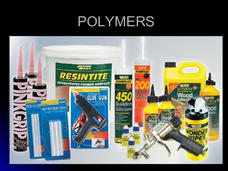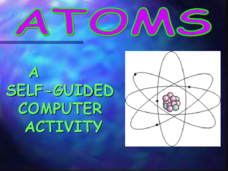Curated OER
History of the Atom
This is a tremendous overview of the tiny atom. Journey through the history of human understanding of this basic building block of matter. Examine each of the sub-atomic particles in detail: neutrons, protons, electrons, quarks. Peruse...
Curated OER
Discovering Elements
A periodic table of elements displays the elements in groups ordered by when they were discovered. Click-by-click, new elements are added, resulting in an almost up-to-date chart. In order to reinforce the idea that symbols are used in...
Curated OER
Atomic Structure
A flashy PowerPoint includes clear summaries of atomic structure and electronic configuration. Dot and cross diagrams will help viewers learn how to draw an atom. As a result, learners should be more clear how electronic configuration...
Science Geek
Periodic Tables
Chemistry jokes only come up periodically, despite the fact that many different periodic tables have been used throughout history. Find out more about various versions in a presentation that includes information about the Mendeleev's,...
Curated OER
Atomic Structure
The first nine slides visit the history of our understanding of atoms. The next several outline the structure of atoms. Subatomic particles, electron configuration, and diagramming methods are introduced. This is a neatly organized...
Curated OER
Review Models of the Atom
Multiple representations of the varying theories of atomic structure. With these pictures and some background of the theories and scientific figures surrounding them, your class will develop a better understanding of scientific history...
Curated OER
Polymers
Present polymers to your chemistry class with this practical PowerPoint. Begin with a definition and the properties of polymer materials. Branch out into diagrams of polymer structure. Consider the two general types: addition polymers...
Curated OER
The Periodic Table
A huge collection of slides introduces chemistry learners to the periodic table of elements, electron configuration, and electronegativity. It opens with the history of today's periodic table, and then details the arrangement. After...
Curated OER
Selected Elements
This collection consists of a slide on each of the following unrelated, but fascinating elements: einsteinium, curium, radium, radon, nobelium, seaborgium, silicon, magnesium, and postassium. You will not find detailed information on the...
Curated OER
The Gas Laws
A couple of gas law charts and the history of the gas laws constitute this presentation. Notes are included for the slide that illustrates how to perform gas law calculations. This is a simple collection, a visual aid enhance to your...
Curated OER
The Periodic Table
These slides introduce the basics of the Periodic Table structure and the history and reasoning behind its organization. A useful chart on the fifth page gives the main properties and differences between metals, non-metals and...
Curated OER
Nuclear Reactions Answers to Questions
Written to accompany another slide show available through our site, the information here gives the history and trivia connected to nuclear decay research. This slide show concentrates on the definitions and theory of nuclear fission and...
Curated OER
The Mole
This compact collection of slides explains the history and use of the mole unit. Relative atomic mass, as John Dalton understood it, is explained. Avogadro's number is also introduced. The mole, or the unit for the amount of a substance,...
Curated OER
The Age of Reason and Enlightenment
A presentation that truly covers the age of reason and enlightenment. Nearly every facet, event, and key player in 18th Century Age of Enlightenment is covered. The information is clear, easy to follow, and lends itself well to note...
Curated OER
Space Shuttle
One slide details the features of Space Shuttle Discovery in graphic form. Another shows a faulty hydrogen fuel sensor. The final slide is a picture of the explosion of Space Shuttle Challenger and the ill-fated crew. If you wanted to...
Curated OER
Atoms : A Self Guided Computer Activity
"Self-guided Computer Activity" simply means that young chemists read through the slides and take notes about atoms along the way. There is an abundance of text on each slide, making this a comprehensive introduction to atomic structure....

















